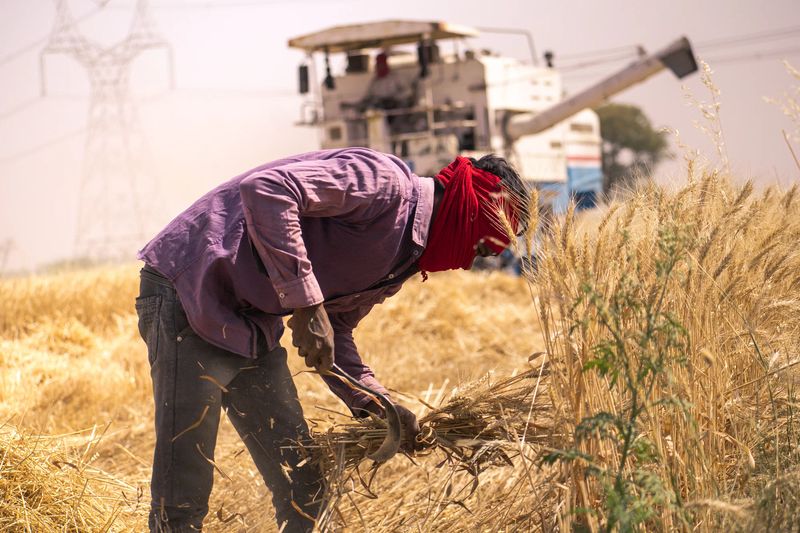Wheat production in India takes a hit, prices shoot up

India’s wheat harvest in 2023 is seen at least 10 per cent lower than the government’s estimate of 112.74 million metric tons, a leading trade body told on Wednesday.
The industry estimate of 101 million to 103 million tons suggests that production could be the lowest in two years, and could complicate the government’s efforts to keep a lid on prices of the staple and overall food inflation.
Farmers start harvesting wheat from March, selling most of their crops to state agencies and private traders by June.
Supplies from farmers have already dropped, suggesting the agriculture ministry’s production estimate is more optimistic than the reality, said Pramod Kumar S, president of the Roller Flour Millers’ Federation.
Wheat prices in New Delhi have jumped 10 per cent in the past two months to Rs 24,900 a metric ton, prompting the government to impose a limit on the amount of wheat stocks traders can hold for the first time in 15 years.
A New Delhi-based trader with a global trade house also said the farm ministry had overestimated this year’s wheat output, while a Mumbai-based trader said the government had failed to take into account heatwaves in February and March and untimely heavy rainfall in April.
“The government was forced to U-turn on exports last year because of the wrong estimate. This year, it could be forced to allow duty-free imports in the December quarter,” the Mumbai trader said.
The lower wheat production could have a number of implications for India and the global market.
For India, it could mean higher food inflation, which could put a strain on household budgets and economic growth. Meanwhile, for the global market, it could mean higher wheat prices, which could add to the cost of food and other commodities.
And for farmers, it could mean lower incomes, which could make it difficult for them to invest in their businesses and improve productivity.
The government is likely to review its wheat production estimates in the coming weeks. If the estimates are confirmed, the government may need to take steps to address the higher food inflation, such as providing subsidies to farmers or importing wheat.
It may also need to reconsider its ban on wheat exports, which was imposed last year to ensure domestic availability. However, any decision to lift the ban would need to be carefully considered, as it could lead to higher wheat prices in the global market.
Read also
Wheat in Southern Brazil Impacted by Dry Weather and Frosts
Oilseed Industry. Leaders and Strategies in the Times of a Great Change
Black Sea & Danube Region: Oilseed and Vegoil Markets Within Ongoing Transfor...
Serbia. The drought will cause extremely high losses for farmers this year
2023/24 Safrinha Corn in Brazil 91% Harvested
Write to us
Our manager will contact you soon



